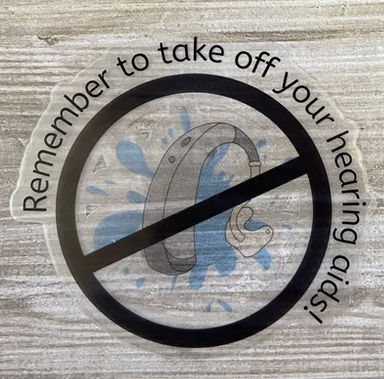View this page in: English | Español
La audición es compleja y requiere de una serie de acciones y reacciones para funcionar. El proceso implica que muchas partes del oído trabajen juntas para convertir las ondas sonoras en información que el cerebro comprende e interpreta.
Las ondas sonoras ingresan al canal auditivo y viajan hacia nuestros tímpanos.
Las ondas sonoras hacen que vibren el tímpano y los huesos del oído medio.
Pequeñas células ciliadas dentro de la cóclea, el órgano sensorial del oído, convierten estas vibraciones en impulsos eléctricos que son captados por el nervio auditivo.
Al nacer, cada oído típico tiene alrededor de 12.000 células sensoriales, llamadas células ciliadas, que se asientan sobre una membrana que vibra en respuesta al sonido entrante. Cada frecuencia de un sonido complejo hace vibrar al máximo la membrana en una ubicación determinada. Debido a este mecanismo, escuchamos diferentes tonos dentro del sonido. Un sonido más fuerte aumenta la amplitud de la vibración, por eso escuchamos el volumen más alto.
Las señales enviadas al cerebro desde el nervio auditivo se interpretan como sonidos.
Cómo funciona la audición (tiene disponible subtitulado en español)
Una vez que las células ciliadas del oído interno se dañan, se produce una pérdida auditiva neurosensorial permanente.
Actualmente, la pérdida auditiva neurosensorial no se puede restaurar en humanos, pero los investigadores de la HHF están trabajando para comprender mejor los mecanismos de la pérdida auditiva, y así encontrar mejores tratamientos y curas.
Traducción al español realizada por Julio Flores-Alberca, enero 2024. Sepa más aquí.
More Resources
The next step in this field is the use of powerful modern sequencing technology in order to map gene activity and gene regulation during hair cell regeneration in fish and birds as well as in mammalian balance organs.
We found that the aging brain tries to amplify degraded input from the auditory nerve and that amplified responses are associated with poorer brain structure and trouble with speech understanding.
On the eve of this biggest day for charitable giving, you’ve more than likely already heard from many nonprofit organizations. Here’s what makes Hearing Health Foundation stand out.
With Thanksgiving here, we’re feeling especially grateful. Thank you, truly, for being part of our Hearing Health Foundation community, some of whom I was fortunate enough to meet over the summer and fall.
During holiday family gatherings, the signs of hearing loss can become especially apparent.
While working in the clinic I realized how much I loved creating resources for patients—brochures, handouts, visual guides—mostly because I couldn’t find what I wanted online.
Digital hearing tools can act as allies to reduce isolation. Technology has adapted to today’s needs and can help people struggling with hearing loss regain and retain their social connections.
On this Veterans Day and every day, Hearing Health Foundation (HHF) thanks our U.S. service members and veterans for their sacrifices. This group is disproportionately at risk for hearing damage, but earlier this year changes to how tinnitus is rated as a compensable disability were proposed.
Our partner Hyperacusis Research recently hosted a webinar that highlighted both the human impact of hyperacusis—pain triggered by everyday sounds—and the scientific progress being made to understand and treat it.













A practical reference, not a lecture, from a music industry professional on how to protect our first instrument: our hearing.